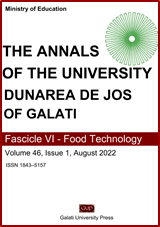Physicochemical properties, consumer acceptability and microbial quality of saccharified sweet potato juice preserved with lemon
Abstract
In this study, saccharified sweet potato juice preserved with lemon juice at different concentrations of 0.5, 1.0, 1.5, 2.0, 2.5 and 3.0%, was formulated. Physicochemical, sensory, and microbial quality of the juice stored for 48 hr were analyzed. The pH and brix values decreased, but the total titratable acidity increased as a result of added lemon juice. There was a significant amount of Vitamin-C, B6, and B9 in the samples, while the antinutritional component (phytate, saponin and tannin) of the juice was generally low compared with the generally acceptable limit. The sensory results showed that the sample with 2.5% lemon juice was the most accepted. The rate of microbial growth within a 48 hr storage period decreased with the addition of lemon and there was no record of fecal coliform bacteria growth. Lemon can be used as a source of natural preservatives and a substitute for artificial preservatives for sweet potato juice.


